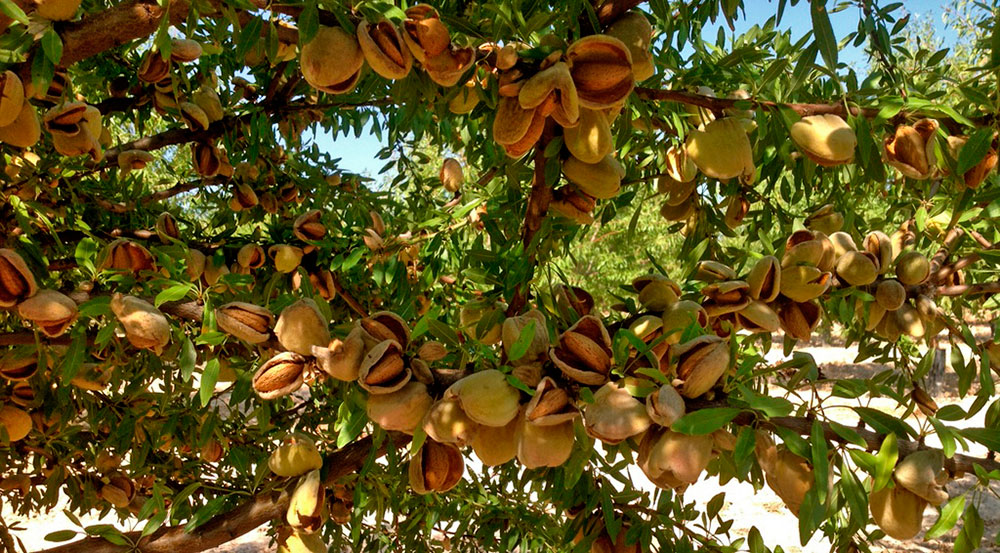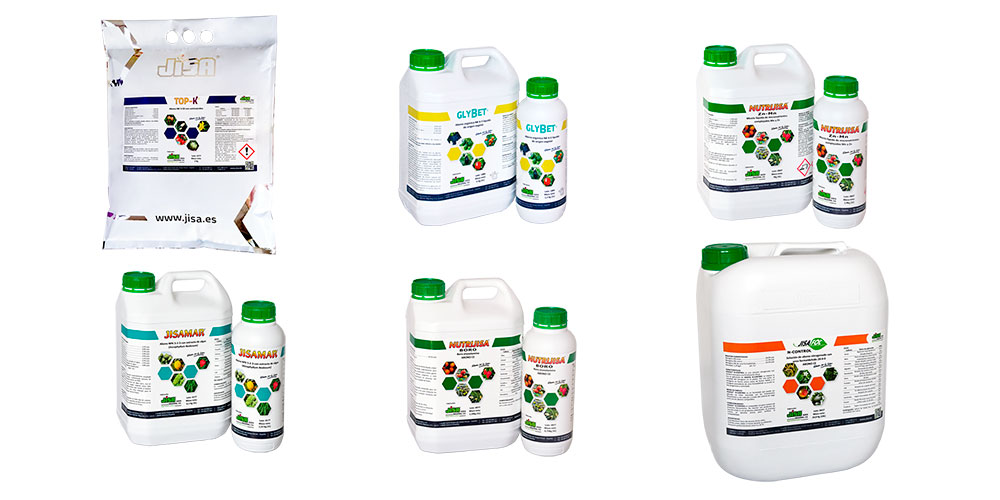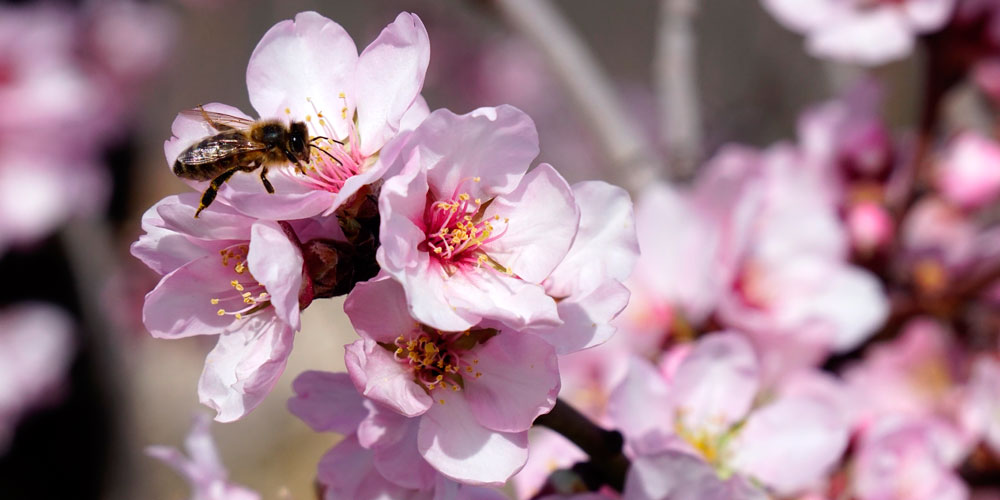The cultivation of the almond tree (Prunus dulcis) is native to Central Asia, but has been in Spain for more than 2000 years. This deciduous tree has been part of the most diverse places in the entire Mediterranean strip, due to its ability to adapt to poor soils and extreme conditions of temperature and drought; although it is clear that much higher performance is obtained with good environmental and soil conditions.
The choice of varieties will always depend on the yield and price. It’s recommended to select two or three varieties for their agronomic, commercial value, flowering compatibility and adaptation to the growing area.
Almond varieties
Among the traditional varieties that are grown in Spain we find, Marcona, Desmayo Largueta that have as pollinators: Ramillete, Atocha and Peraleja. In cooler inland areas with frost risk we find other varieties such as Ferragnes, Ferraduel, Francolí, etc.
Currently there is a selection of late flowering varieties, easy to prune, as they do not have many branches, with hard or semi-hard fruit, and some are also self-compatible.
Among the self-fertile varieties, which can be fertilized by their own pollen, or by the pollen of other flowers of the same variety, we have the next vatieties: Guara, Antoñeta, Marta, Cambra and Blanquerna.
In recent years, the almond sector in Spain is obtaining a good profitability. Firstly, due to the good sales prices and coupled with the need to reconvert unprofitable crops, this is causing a growth of the crop in areas where it was not considered a traditional crop. Most of the new plantations are provided with irrigation systems, obtaining production levels that are more than acceptable for the good profitability of the crop. For this reason, it’s necessary to improve the traditional cultivation techniques and adapt them to the production needs of new high-productivity irrigation plantations. In this sense, improving plant nutrition can help us get closer to the maximum production potential of new alternatives to traditional cultivation.
In almond cultivation, fertilization adapted to the needs of the crop is very important according to age, physical-chemical conditions of the soil and the growing area.

Almond tree fertilizer program
JISA recommends the design of a correct fertilization program, based on the knowledge of the main physical-chemical parameters of the plantation soil, and its monitoring based on the leaf analyses in the month ofJuly, in order to be able to act on any possible deficiency that is not yet manifesting.
The cultivation of the almond tree has traditionally been a rainfed and rustic cultivation, typical of areas with poor soil and poor terrain, to which you have contributed with organic soil amendments and cultivation techniques, in areas which could be performed. That’s why, the yields of traditional plots have always been very low.
The new almond plots currently have a smaller planting framework and are provided with a drip irrigation facility. This means that we find, for example, in super-intensive crops, a number of trees almost 5 times greater than that of a traditional plot, so the fertilization needs will be much higher. The fertilization can be done by soil application, providing ground fertilizers, and with the addition of fertigation, both in the contribution of required fertilizer units, as well as, by providing fast-assimilation products, very specific, to increase the efficiency and effectiveness of the fertilizer and that the nutritive elements are not lost by leaching and are available to the plant as long as possible.

In this sense, JISA proposes the application of Libamin Mix (Radicular), to strengthen the root system at the beginning of sprouting, to ensure a good development of the roots that will carry out the work of absorption of nutrients.
Caring for the plantation soil is essential to obtain good yields in any crop. The soil is the storehouse of the nutrients that are available to the tree. JISA recommends the use of Humilig 25 Plus, to increase the capacity of our soil to retain the necessary elements to make them available to the crop when its required. Its use is recommended in soils with optimal conditions for cultivation as well as in soils that require an improvement action to obtain adequate performance, such as calcareous soils.
Almond cultivation adapts itself to very adverse environmental conditions; it withstands cold and extreme heat very well, that is why we find many plots in remote places, at altitude, where both extreme situations occur. The use of Fulvin 40-22 (Furdos) in fertirrigation throughout the cultivation cycle will help the tree to increase its tolerance and better overcome the consequences of water stress caused by extreme temperatures and drought. Obtaining an increase in crop yield as a result of its application during the campaign.

JISA recommends to apply foliar applications with biostimulant products and specific formulations, as a complement for the adequate fertilization, according to the corresponding phenological phase, with rapid assimilation by the crop to maintain the expected production levels.
From JISA we recommend foliar treatments with Vegetamin 24 to strengthen the vegetative development of our crop. In pre-flowering, the use of Nutrijisa Zn-Mn is essential to ensure a good number of fruit setting per tree. Cuajemax is a specific product to ensure good pollination and a homogeneous fruit setting.
The increase in caliber of the tender drupe, as well as the differentiation of the flower buds of the following year, takes place in the hottest season, which is why the use of a biostimulant with osmoprotective effect such as Glybet, will help us obtain the better results in the current campaign and in the subsequent one. The foliar treatments with Jisafol Fattening provide potassium that is absorbed by the tree through the leaves very quickly, being compatible with all phytosanitary treatments. In the ripening period of the fruit, in order to advance and homogenize the harvest, we can use Top-k by fertigation at the time of greatest cultivation requirement to improve production and quality of the final fruit.
For the control of diseases in almond, prevention is always advisable with foliar applications based on Cupronato, which is a complexed copper-based formulation compatible with all phytosanitary treatments. Cupronato helps in the prevention of Monilia Spp and screening, as well as to fight against leprosy or dent of the almond tree.
Once the harvest is done, the tree will continue with leaves, now it’s time to start thinking about next year. From JISA, we recommend carrying out post-harvest treatments to ensure that the tree will have reserves to nourish the new buds already differentiated in this period. That is why foliar treatments based on Jisamar, Jisafol N-control, Nutrijisa Zn-Mn and Nutrijisa Boro, are going to prevent that our plantation from the beginning of development cycle of the year with deficiencies in these elements.
For any doubt or technical question about almond cultivation, JISA technical-commercial team is available to help you obtain optimum yields in your almond plantation.
